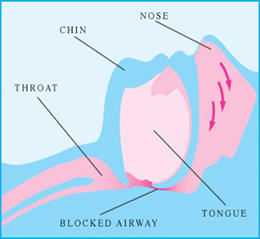
Obstructive sleep apnea (OSA) may be a risk factor for the development of other
medical conditions. High blood pressure (hypertension), heart failure, heart rhythm
disturbances, atherosclerotic heart disease and pulmonary hypertension are the complications
of untreated obstructive sleep apnea.
The first step in treatment resides in recognition of the symptoms and seeking appropriate
consultation. Oral and maxillofacial surgeons offer consultation and treatment options.
In addition to a detailed history, the doctors will assess the anatomic relationships
in the maxillofacial region. With cephalometic (skull x-ray) analysis, the doctors
can ascertain the level of obstruction. Sometimes a naso-pharyngeal exam is done
with a flexible fiber-optic camera. To confirm the amount of cardiovascular compromise
and decreased oxygenation levels, a sleep study may be recommended to monitor an
individual overnight.
There are several treatment options available. An initial treatment smay consist
of using a nasal CPAP machine that delivers pressurized oxygen through a nasal mask
to limit obstruction at night.
One of the surgical options is an uvulo-palato-pharyngo-plasty (UPPP), which is
performed in the back of the soft palate and throat. A similar procedure is sometimes
done with the assistance of a laser and is called a laser assisted uvulo-palato-plasty
(LAUPP). In other cases, a radio-frequency probe is utilized to tighten the soft
palate. These procedures usually performed under IV sedation in the office.
In more complex cases, the bones of the upper and lower jaw may be repositioned
to increase the size of the airway (orthognathic surgery). This procedure is done
in the hospital under general anesthesia and requires a one to two day overnight
stay in the hospital.
OSA is a very serious condition that needs careful attention and treatment. Most
major medical plans offer coverage for diagnosis and treatment.